Evaluierung von Subventionsprogrammen
Diese Forschungsgruppe untersucht die Effekte von Produktions- und Wissensnetzwerken auf die Produktivität von Unternehmen und Regionen. Darüber hinaus werden Wirkungen staatlicher Förderprogramme für Forschung und Entwicklung sowie regionalpolitischer Programme auf die Leistungsfähigkeit von Unternehmen und Regionen evaluiert.
Zentrum für evidenzbasierte Politikberatung (IWH-CEP)
Forschungscluster
Wirtschaftliche Dynamik und StabilitätIhr Kontakt

- Abteilung Zentrum für evidenzbasierte Politikberatung
PROJEKTE
09.2019 ‐ 09.2022
Etablierung einer evidenzbasierten Evaluationskultur für industriepolitische Fördermaßnahmen in Deutschland (EVA-KULT)
Europäischer Fonds für regionale Entwicklung (EFRE)
Das Vorhaben dient dem Ausbau des Zentrums für evidenzbasierte Politikberatung am Leibniz-Institut für Wirtschaftsforschung Halle (IWH-CEP).
01.2018 ‐ 12.2020
Vernetzt wachsen - Innovatives Sachsen-Anhalt durch digitale Geschäftsmodelle (Kompetenzzentrum 4.0)
Bundesministerium für Wirtschaft und Energie (BMWi)
01.2017 ‐ 12.2018
Politische Partizipation in Ostdeutschland
Bundesministerium für Wirtschaft und Energie (BMWi)
12.2015 ‐ 11.2018
Sozioökonomische Effekte der Erforschung innovativer Ansätze für die POC-Diagnostik
Bundesministerium für Bildung und Forschung (BMBF)
Teilvorhaben im Verbundprojekt “POC-Sensorplattform für chronisch-entzündliche Atemwegserkrankungen (EXASENS)”. Neun Leibniz-Institute arbeiten gemeinsam im Pilotprojekt EXASENS an der Erforschung einer Point-of-Care-Technologie zur Vorhersage und Diagnose von chronisch-entzündlichen Atemwegserkrankungen. Der Verbund wird vom Bundesministerium für Bildung und Forschung (BMBF) mit 6,25 Millionen Euro gefördert und liefert einen Beitrag zum Ausbau und zur Stärkung des Themenfeldes Gesundheitstechnologien.
Vgl. Pressemitteilung des Leibniz-Institut für Photonische Technologien (IPHT), Jena.
02.2017 ‐ 02.2018
Bedeutung außeruniversitärer Forschungseinrichtungen für die Entwicklung von Betrieben und Regionen
Bundesministerium für Bildung und Forschung (BMBF)
01.2015 ‐ 12.2016
Evaluierung der GRW-Förderung in Sachsen-Anhalt
Investitionsbank Sachsen-Anhalt
Referierte Publikationen
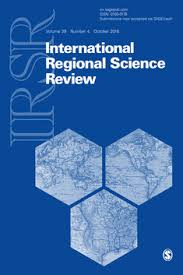
Joint R&D Subsidies, Related Variety, and Regional Innovation
in: International Regional Science Review, Nr. 3, 2017
Abstract
Subsidies for research and development (R&D) are an important tool of public R&D policy, which motivates extensive scientific analyses and evaluations. This article adds to this literature by arguing that the effects of R&D subsidies go beyond the extension of organizations’ monetary resources invested into R&D. It is argued that collaboration induced by subsidized joint R&D projects yield significant effects that are missed in traditional analyses. An empirical study on the level of German labor market regions substantiates this claim, showing that collaborative R&D subsidies impact regions’ innovation growth when providing access to related variety and embedding regions into central positions in cross-regional knowledge networks.
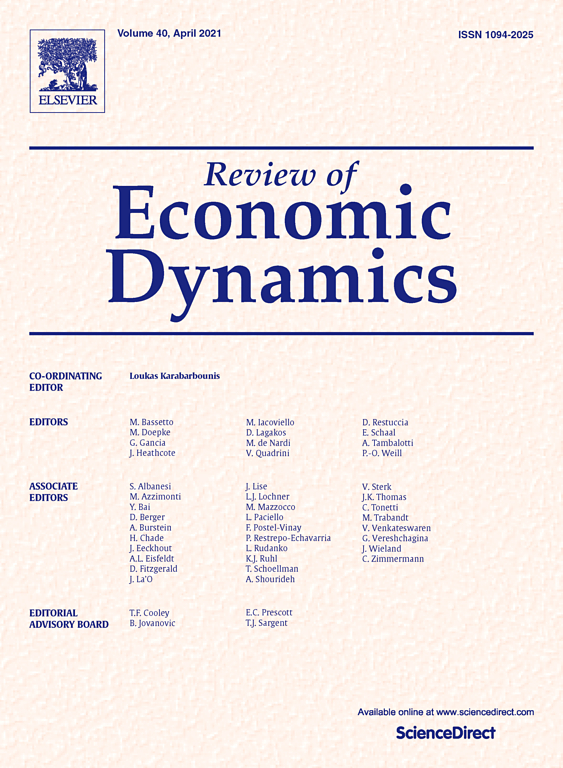
Complex-task Biased Technological Change and the Labor Market
in: Review of Economic Dynamics, April 2017
Abstract
In this paper we study the relationship between task complexity and the occupational wage- and employment structure. Complex tasks are defined as those requiring higher-order skills, such as the ability to abstract, solve problems, make decisions, or communicate effectively. We measure the task complexity of an occupation by performing Principal Component Analysis on a broad set of occupational descriptors in the Occupational Information Network (O*NET) data. We establish four main empirical facts for the U.S. over the 1980–2005 time period that are robust to the inclusion of a detailed set of controls, subsamples, and levels of aggregation: (1) There is a positive relationship across occupations between task complexity and wages and wage growth; (2) Conditional on task complexity, routine-intensity of an occupation is not a significant predictor of wage growth and wage levels; (3) Labor has reallocated from less complex to more complex occupations over time; (4) Within groups of occupations with similar task complexity labor has reallocated to non-routine occupations over time. We then formulate a model of Complex-Task Biased Technological Change with heterogeneous skills and show analytically that it can rationalize these facts. We conclude that workers in non-routine occupations with low ability of solving complex tasks are not shielded from the labor market effects of automatization.
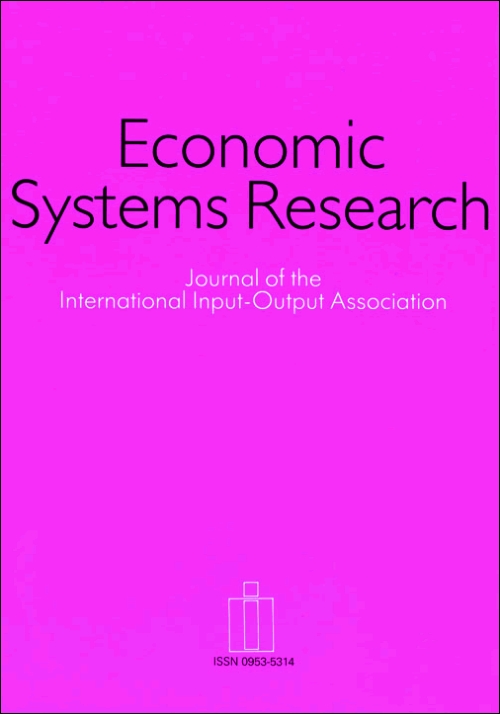
Mapping Potentials for Input-Output Based Innovation Flows in Industrial Clusters – An Application to Germany
in: Economic Systems Research, Nr. 4, 2016
Abstract
Our paper pursues two aims: first, it presents an approach based on input–output innovation flow matrices to study intersectoral innovation flows within industrial clusters. Second, we apply this approach to the identification of structural weaknesses in East Germany relative to the western part of the country. The case of East Germany forms an interesting subject because while its convergence process after unification began promisingly in the first half of the 1990s, convergence has since slowed down. The existing gap can now be traced mainly to structural weaknesses in the East German economy, such as the absence of strong industrial cluster structures. With this in mind, we investigate whether East Germany does in fact reveal the abovementioned structural weaknesses. Does East Germany possess fewer industrial clusters? Are they less connected? Does East Germany lack specific clusters that are also important for the non-clustered part of the economy?
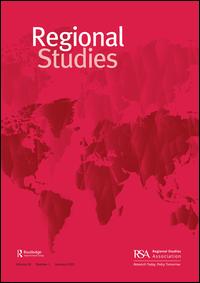
The Importance of Localized Related Variety for International Diversification of Corporate Technology
in: Regional Studies, Nr. 10, 2016
Abstract
Die Bedeutung der lokalisierten verbundenen Vielfalt für die internationale Diversifizierung von Unternehmenstechnik. Die Internationalisierung der Forschung und Entwicklung hat sich in den letzten Jahren erheblich verstärkt. In diesem Beitrag analysieren wir die Determinanten der räumlichen Verteilung von ausländischen Technikaktivitäten in 96 deutschen Regionen. Zur Identifizierung ausländischer Technikaktivitäten wird das Konzept des grenzübergreifenden Eigentums auf Patentanträge angewandt. Die wichtigste Prämisse lautet, dass Regionen mit einer höheren verbundenen Vielfalt von Technikaktivitäten zwischen den einzelnen Sektoren mehr ausländische Technikaktivitäten anziehen. Aus den Schätzungen geht hervor, dass dies auf Regionen zutrifft, die sich durch ein hohes Maß an genereller technischer Stärke auszeichnen. Dies lässt darauf schließen, dass verbundene Vielfalt die technische Diversifizierung von ausländischen Unternehmen in Regionen an der Spitze der geografischen Hierarchie begünstigt.

Burdett–Mortensen Model of on-the-Job Search with Two Sectors
in: Review of Economic Dynamics, Special Issue in Honor of Dale Mortensen 2016
Abstract
The focus of this paper is on the steady state of a two-sector economy with undirected search where employed and unemployed workers can search for jobs, both within a sector and between the sectors. As in the one-sector model, on-the-job search generates wage dispersion among homogeneous workers. The analysis of the two-sector model uncovers a property called constant tension that is responsible for analytical tractability. We characterize the steady state in all cases with constant tension. When time discounting vanishes, constant tension yields the endogenous separation rate in each sector as a linear function of the present value for a worker. The one-sector economy automatically satisfies constant tension, in which case the linear separation rate implies that equilibrium offers of the worker value are uniformly distributed. Constant tension also has strong predictions for worker transitions and value/wage dispersion, both within a sector and between the two sectors. When constant tension does not hold, we compute the steady state numerically and illustrate its properties.
Arbeitspapiere
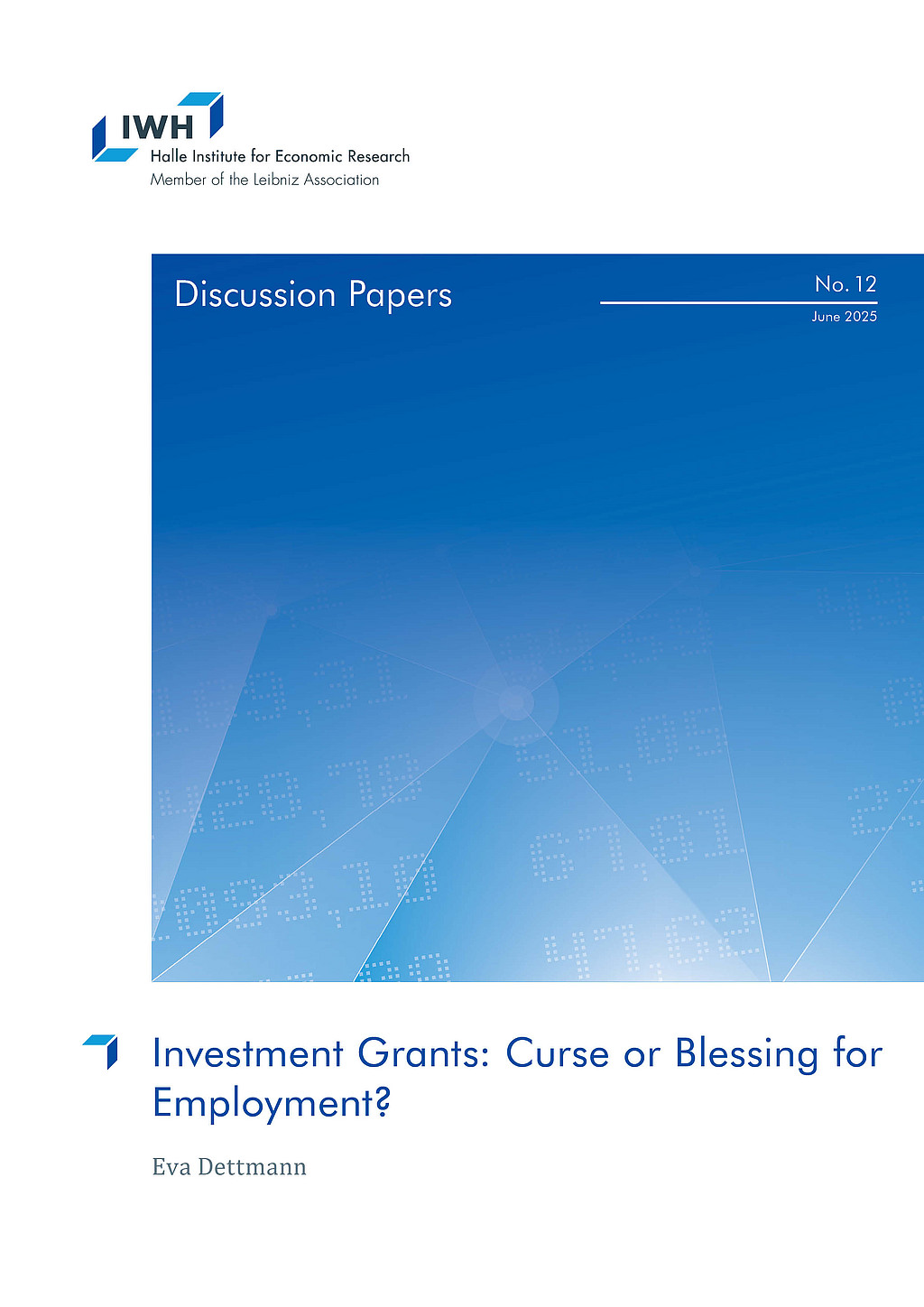
Investment Grants: Curse or Blessing for Employment?
in: IWH Discussion Papers, Nr. 12, 2025
Abstract
<p>In this study, establishment-level employment effects of investment grants in Germany are estimated. In addition to the quantitative effects, I provide empirical evidence of funding effects on different aspects of employment quality (earnings, qualifications, and job security) for the period 2004 to 2020. The database combines project-level treatment data, establishment-level information on firm characteristics and employee structure, and regional information at the district-level. For the estimations, I combine the difference-in-differences approach of Callaway and Sant’Anna (2021) with ties matching at the cohort level. The estimations yield positive effects on the number of employees, but point to contradicting effects of investment grants on different aspects of employment quality.</p>
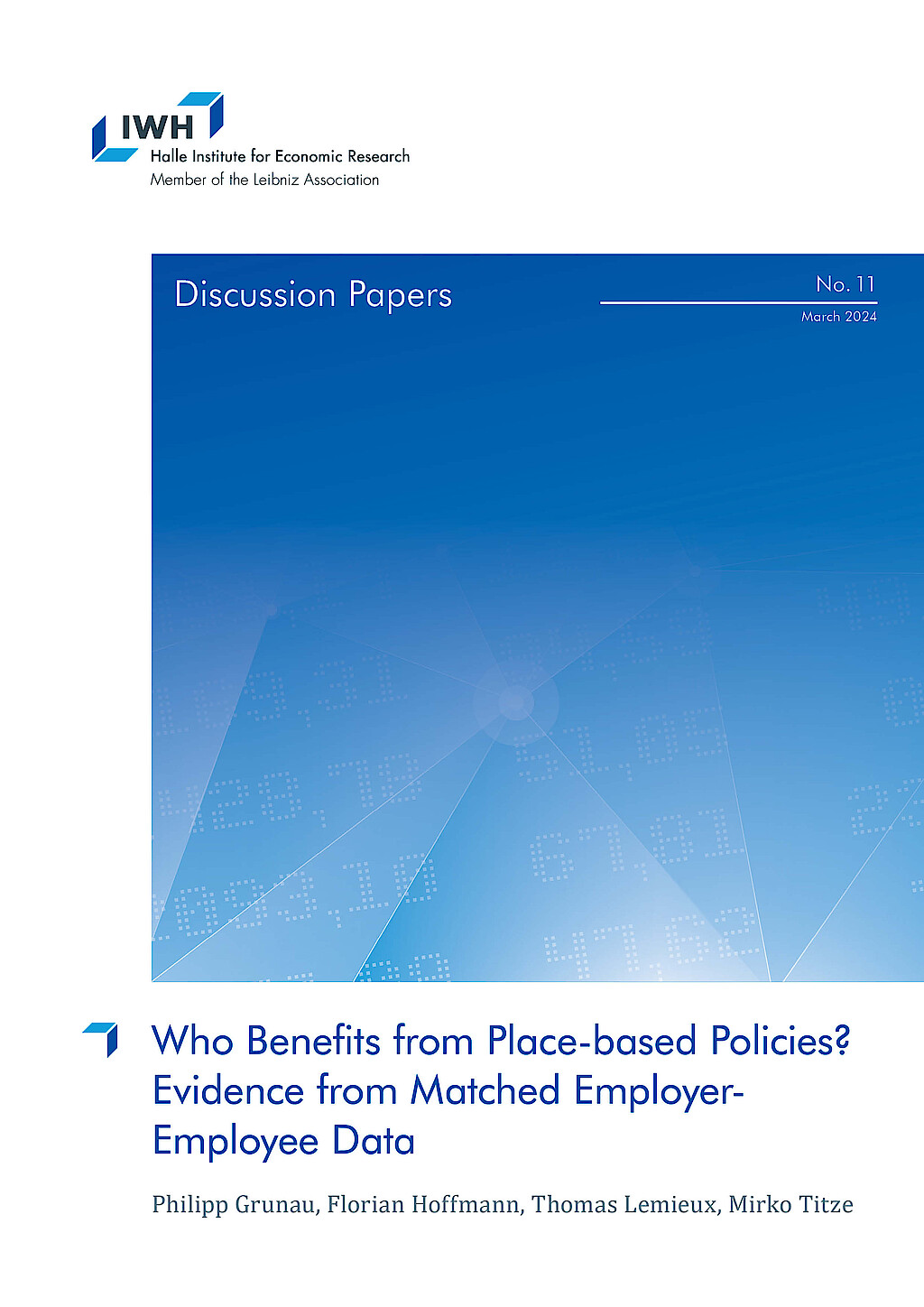
Who Benefits from Place-based Policies? Evidence from Matched Employer-Employee Data
in: IWH Discussion Papers, Nr. 11, 2024
Abstract
<p>We study the granular wage and employment effects of a German place-based policy using a research design that leverages conditionally exogenous EU-wide rules governing program parameters at the regional level. The place-based program subsidizes investments to create jobs with a subsidy rate that varies across labor market regions. The analysis uses matched data on the universe of establishments and their employees, establishment-level panel data on program participation, and regional scores that generate spatial discontinuities in program eligibility and generosity. Spatial spillovers of the program linked to changing commuting patterns can be assessed using information on place of work and place of residence, a unique feature of the data. These rich data enable us to study the incidence of the place-based program on different groups of individuals. We find that the program helps establishments create jobs that disproportionately benefit younger and less-educated workers. Funded establishments increase their wages but, unlike employment, wage gains do not persist in the long run. Employment effects estimated at the local area level are slightly larger than establishment-level estimates, suggesting limited economic spillover effects. On the other hand, spatial spillovers are large as over half of the employment increase comes from commuters. Using subsidy rates as an instrumental variable for actual subsidies indicates that it costs approximately EUR 25,000 to create a new job in the economically disadvantaged areas targeted by the program.</p>
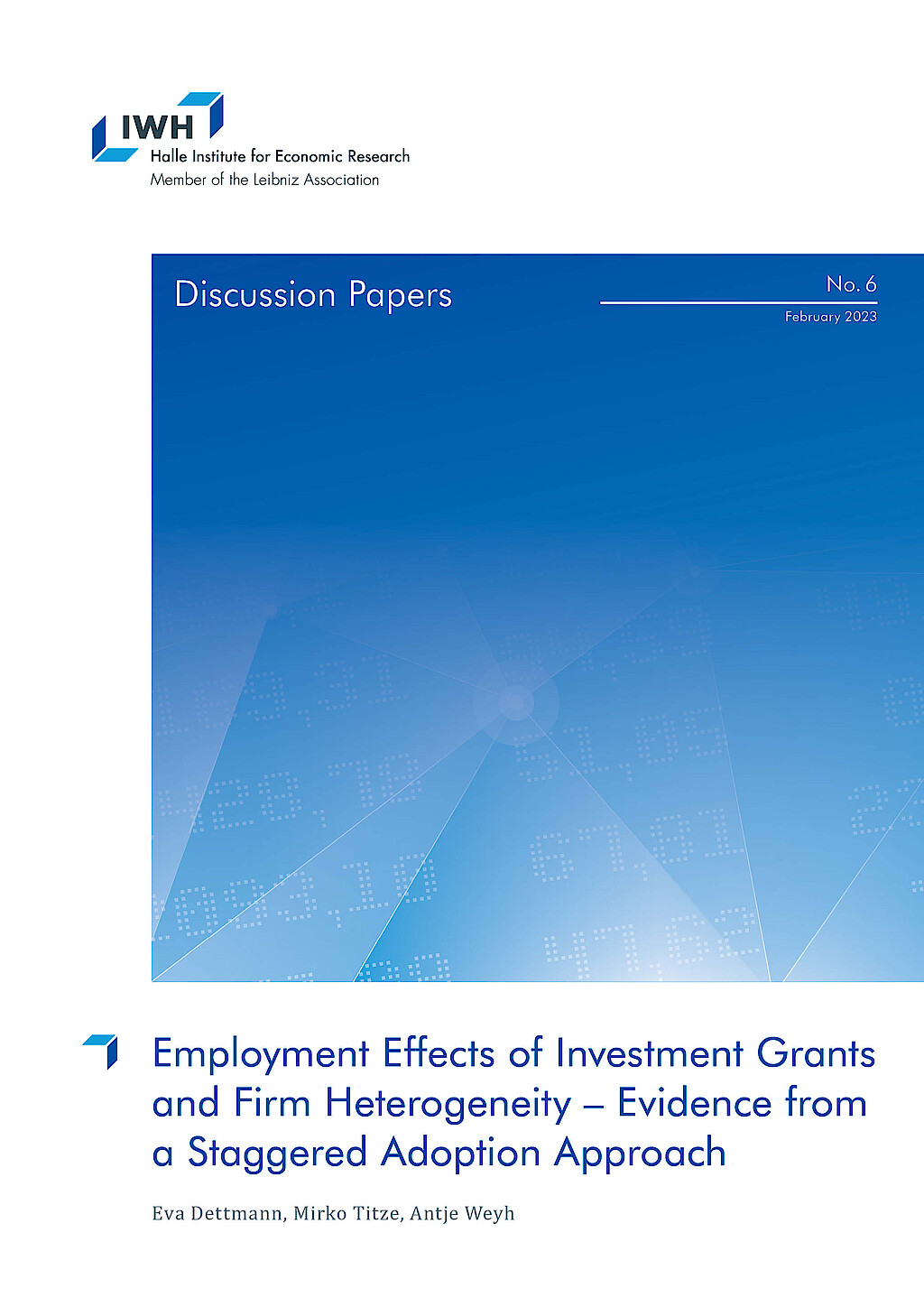
Employment Effects of Investment Grants and Firm Heterogeneity – Evidence from a Staggered Adoption Approach
in: IWH Discussion Papers, Nr. 6, 2023
Abstract
<p>This study estimates the firm-level employment effects of investment grants in Germany. In addition to the average treatment effect on the treated, we examine discrimination in the funding rules as potential source of effect heterogeneity. We combine a staggered difference-in-differences approach that explicitly models variations in treatment timing with a matching procedure at the cohort level. The findings reveal a positive effect of investment grants on employment development in the full sample. The subsample analysis yields strong evidence for heterogeneous effects based on firm characteristics and the economic environment. This can help to improve the future design of the program.</p>
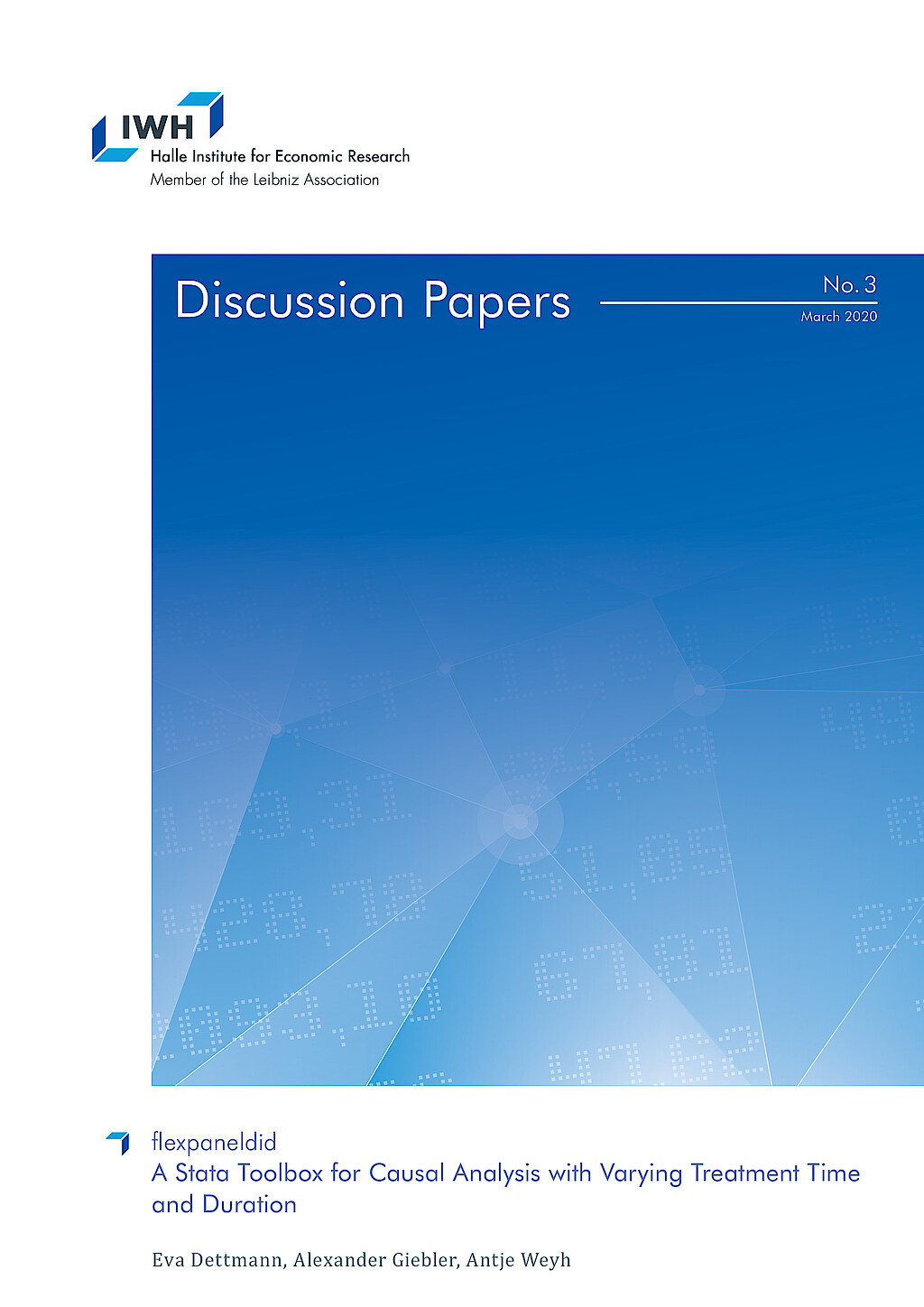
flexpaneldid: A Stata Toolbox for Causal Analysis with Varying Treatment Time and Duration
in: IWH Discussion Papers, Nr. 3, 2020
Abstract
The paper presents a modification of the matching and difference-in-differences approach of Heckman et al. (1998) for the staggered treatment adoption design and a Stata tool that implements the approach. This flexible conditional difference-in-differences approach is particularly useful for causal analysis of treatments with varying start dates and varying treatment durations. Introducing more flexibility enables the user to consider individual treatment periods for the treated observations and thus circumventing problems arising in canonical difference-in-differences approaches. The open-source flexpaneldid toolbox for Stata implements the developed approach and allows comprehensive robustness checks and quality tests. The core of the paper gives comprehensive examples to explain the use of the commands and its options on the basis of a publicly accessible data set.
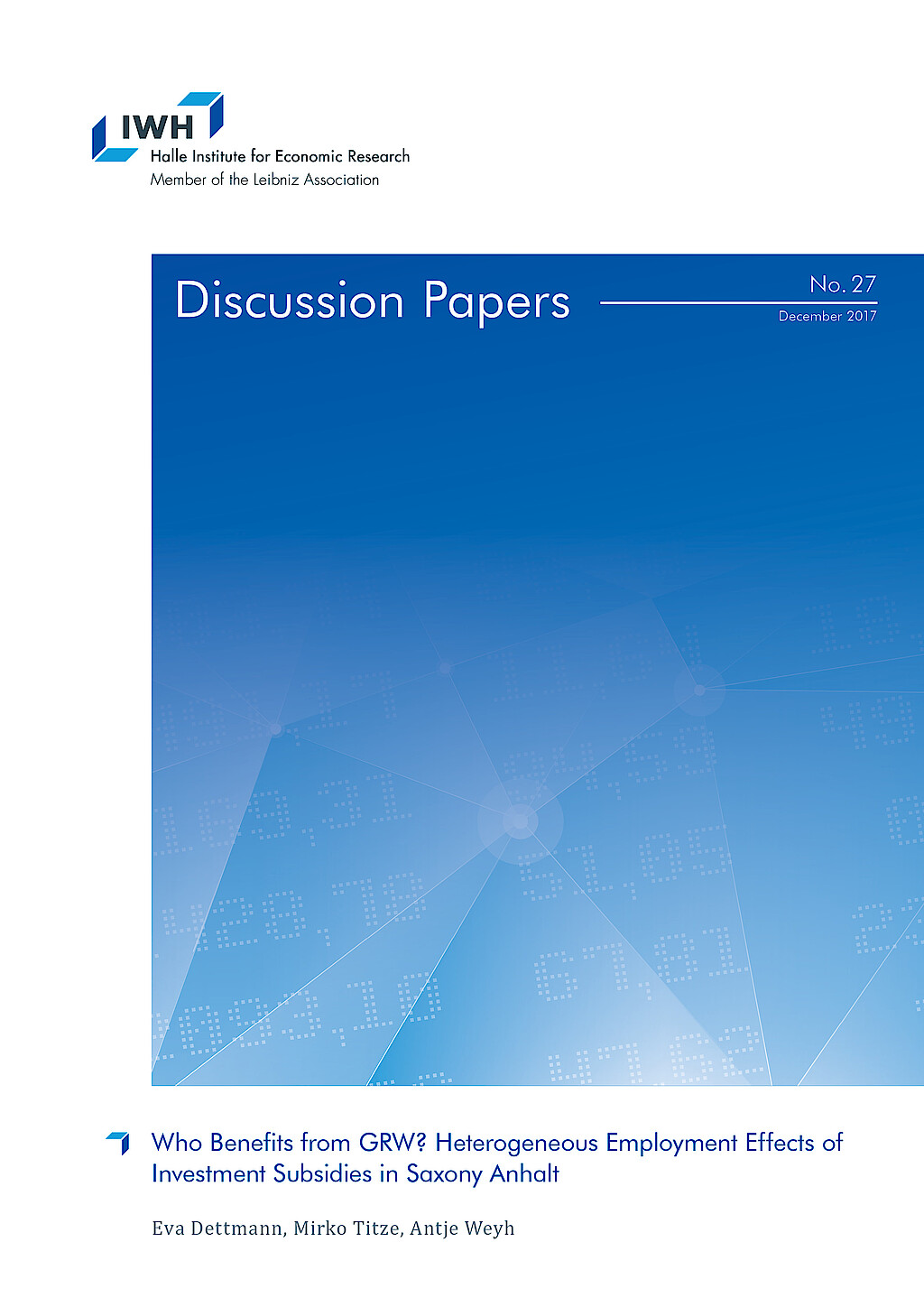
Who Benefits from GRW? Heterogeneous Employment Effects of Investment Subsidies in Saxony Anhalt
in: IWH Discussion Papers, Nr. 27, 2017
Abstract
The paper estimates the plant level employment effects of investment subsidies in one of the most strongly subsidized German Federal States. We analyze the treated plants as a whole, as well as the influence of heterogeneity in plant characteristics and the economic environment. Modifying the standard matching and difference-in-difference approach, we develop a new procedure that is particularly useful for the evaluation of funding programs with individual treatment phases within the funding period. Our data base combines treatment, employment and regional information from different sources. So, we can relate the absolute effects to the amount of the subsidy paid. The results suggest that investment subsidies have a positive influence on the employment development in absolute and standardized figures – with considerable effect heterogeneity.













